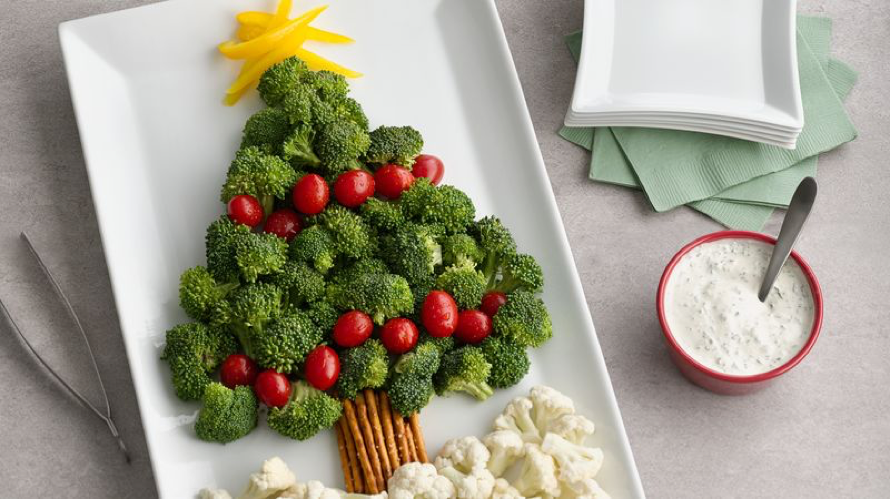Written By: Selia Cox, MSN, APRN, FNP-BC
While thinking about the holiday season, you may anticipate the upcoming temptations of desserts or alcohol that may interfere with a specific treatment goal you are working on. During the holiday season, I have found myself having a familiar conversation with several different patients about the challenges of food cravings this time of year. Overindulging in the abundance of treats that surround us often leaves patients feeling defeated, or physically and mentally unwell. As we prepare for holiday gatherings, there are some easy ways to add in more healthy color into your nutrition plan with veggies and fruits bursting with nutrients. The following tips will leave you feeling well, and allow you to stay strong in your pursuit of better health.
Plant foods not only activate our senses with beautiful colors, shapes, smells and tastes but they contain natural compounds called phytonutrients. These natural compounds provide the color to these foods and help our bodies to eliminate via our detoxification pathways, boosts our immune systems, and help to properly metabolize hormones such as estrogen. These foods also support our digestive system, calm inflammation and improve blood sugar regulation. Pretty amazing!
Below are examples of different foods representing each color and the phytonutrient benefit they provide.
- Explore and add in a new color each week
- Aim to increase your intake by ½ cup more than you do now
- Work towards is 9 servings per day (if ½ cup is a serving size) to help reduce risk of chronic conditions such as heart disease, diabetes
- Some ways to sneak in color(s) can include smoothies, vegetable medleys, and or sauces
*Please work with your health care practitioner to add in foods that align with a nutrition plan you may be following.
Red
- Foods: Tomato, radishes, strawberries, rhubarb, apple, beets, bell pepper, pomegranates
- Compound benefit: Rich in quercetin and has been studied to help support inflammation and immune function. Largely, known for its antihistamine impact to stabilize mast cells thus reducing histamine response (Li et al., 2016)
Orange
- Foods: Pumpkin, sweet potato, papaya, orange, carrots, turmeric
- Compound benefit: Studies show that Carotenoids is correlated with improvement of cognitive function involving memory, language and lower depression (Tanprasertsuk et al., 2021).
Yellow
- Foods: Ginger, lemon, banana, starfruit, pineapple, millet, potatoes, summer squash
- Compound benefit: Lutein and Zeaxanthin are also carotenoids; studies have shown a relationship between lower amounts of these compounds associated with age related cataract and acquired diseases of the retina throughout the lifespan (Mares, 2016).
Green
- Foods: Greens including kale, dandelion, arugula, collards, spinach, limes, pears, broccoli, cucumbers, celery, green tea,
- Compound benefit: Indole-3-carbinol is a great phytochemical found in cruciferous vegetables that helps to support estrogen metabolism. What this means is that it helps with the breakdown of estrogen down a more protective pathway, 2-hydroxyestrone. This pathway has been shown to not stimulate cancer cells as seen in the other two pathways, 14 and 16 hydroxy (Salon et al., 2020).
Purple and Black
- Foods: Eggplant, figs, berries including blueberries, blackberries, prunes, olives, kale
- Compound benefits: Anthocyanins are found in berries and studies have shown the impact that it has on decreasing inflammation within the vessel well, improves insulin signaling and glucose metabolism (Mozos, 2021).
White, Tan and Brown
- Foods: Cauliflower, dates, garlic, coconut, mushrooms, almonds, cashews, walnuts, flax seeds, pumpkin seeds, sunflower seeds, sesame seeds, tahini, whole grains including quinoa, oats
- Compound benefits: Sesamin from sesame is a type of lignan that has shown to support heart health by having blood fat lowering properties and shown to reduce systolic blood pressure in patients with high blood pressure (Wei et al., 2022).
When I am going to a holiday party, one of my favorite things to do is to create a holiday shape with veggies, fruit, nuts and seeds. This can include a snowman or a wreath. This is a great time to exercise your enjoyment of Pinterest to get some ideas. You can even add more phytonutrients when pairing with guacamole, and or hummus as dipping options. Also, offers an opportunity to bring something you can enjoy when you may not know what is on the menu.
Have fun incorporating more color into your holiday season!
References
Angela Sadlon ND, Michael T. Murray ND, in Textbook of Natural Medicine (Fifth Edition), 2020
Li, Y., Yao, J., Han, C., Yang, J., Chaudhry, M. T., Wang, S., Liu, H., & Yin, Y. (2016). Quercetin, Inflammation and Immunity. Nutrients, 8(3), 167. https://doi.org/10.3390/nu8030167
Mares J. (2016). Lutein and Zeaxanthin Isomers in Eye Health and Disease. Annual review of nutrition, 36, 571–602. https://doi.org/10.1146/annurev-nutr-071715-051110
Mozos, I., Flangea, C., Vlad, D. C., Gug, C., Mozos, C., Stoian, D., Luca, C. T., Horbańczuk, J. O., Horbańczuk, O. K., & Atanasov, A. G. (2021). Effects of Anthocyanins on Vascular Health. Biomolecules, 11(6), 811. https://doi.org/10.3390/biom11060811
Tanprasertsuk, J., Scott, T. M., Barbey, A. K., Barger, K., Wang, X. D., Johnson, M. A., Poon, L. W., Vishwanathan, R., Matthan, N. R., Lichtenstein, A. H., Ferland, G., & Johnson, E. J. (2021). Carotenoid-Rich Brain Nutrient Pattern Is Positively Correlated With Higher Cognition and Lower Depression in the Oldest Old With No Dementia. Frontiers in nutrition, 8, 704691. https://doi.org/10.3389/fnut.2021.704691
Wei, P., Zhao, F., Wang, Z., Wang, Q., Chai, X., Hou, G., & Meng, Q. (2022). Sesame (Sesamum indicum L.): A Comprehensive Review of Nutritional Value, Phytochemical Composition, Health Benefits, Development of Food, and Industrial Applications. Nutrients, 14(19), 4079. https://doi.org/10.3390/nu14194079




